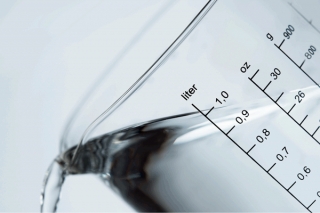
Scaling Up Recipes During Downtime
31 October 2022Students practice the skills needed to convert formulas using water and premade-pie dough.
By Dr. Jennifer Denlinger, CCC, CHEP
Feedback & comments: This email address is being protected from spambots. You need JavaScript enabled to view it.
If a student has their grandmother’s favorite pie recipe and wants to reproduce it for service, they need to understand the amount required for the meal and the portion yield. I have two activities that help teach students the critical thinking skills required to convert formulas.
Students use generic and non-edible products in these lessons to make them cost-effective. I also have these lessons ready for use during down time in the kitchen when recipes are baking or chilling.
The first exercise centers around how much material fits in a vessel, which ultimately asks for the optimal yield per vessel. I assemble as many pans and plates as there is time to measure. For example, I have several round cake pans, heart and bundt pans, cupcake and loaf pans, square and rectangle pans as well as various hotel pans. Students then measure and record each vessel’s dimensions and how much water (which is a visual substitute for a pie filling) it takes to fill the vessel ¾-full. This allows them to determine the vessel’s yield in fluid ounces.
Students learn how different aspects might change the vessel’s yield, such as surface area, evaporation rate and amount to portion out. I ask them, “If the diameter of the vessel changes, does the slice of pie change in size?” This is the first step in making sure their recipe reproduction happens correctly.
From there, we talk about the pie’s lining and topping. For this exercise, I use premade-pie dough and crumbs. Students first measure and record plate or pan dimensions and then line the pans with plastic wrap. They roll out pie dough to 1/8” thickness and cut the portion they think is appropriate for the vessel. Once the dough fits snuggly and is trimmed, they remove the plastic wrap and dough and measure and record its weight. They then reroll the dough and do the same for the next size vessel. The steps for the crumb topping are nearly identical. Students line the pan with plastic wrap, spread the crumb mixture to 1/8” thickness and measure and record its weight in ounces.
I then ask them questions like: How much pie dough was required? How much crumbs do you need? What if you want to make individual tarts instead of a larger pie that needs to be cut? How do you scale that portion of the recipe? This is also a great exercise for regulating how much streusel or crisp topping should be included on desserts and other preparations.
If they know that each pan needs x amount of product, y amount of filling, and z amount of topping, then large production can be more successfully scaled.
Attachments:
Filling Cake and Baking Pans
Pie Dough/Crumbs
Chef Jennifer M. Denlinger, PhD., CCC, CHEP, is the Culinary Management Program Department Chair at the Poinciana Campus of Valencia College. She is also the vice president of ACF’s Central Florida Chapter. Additionally, Chef Denlinger earned the 2020 Innovation Award, sponsored by CAFÉ and the Idaho Potato Commission, for a creative escape room based on safe food handling procedures. She also earned the 2021 Green Award sponsored by the United Soybean Board and was runner up in 2021 for the Postsecondary Education of the Year sponsored by Sysco Corporation.
